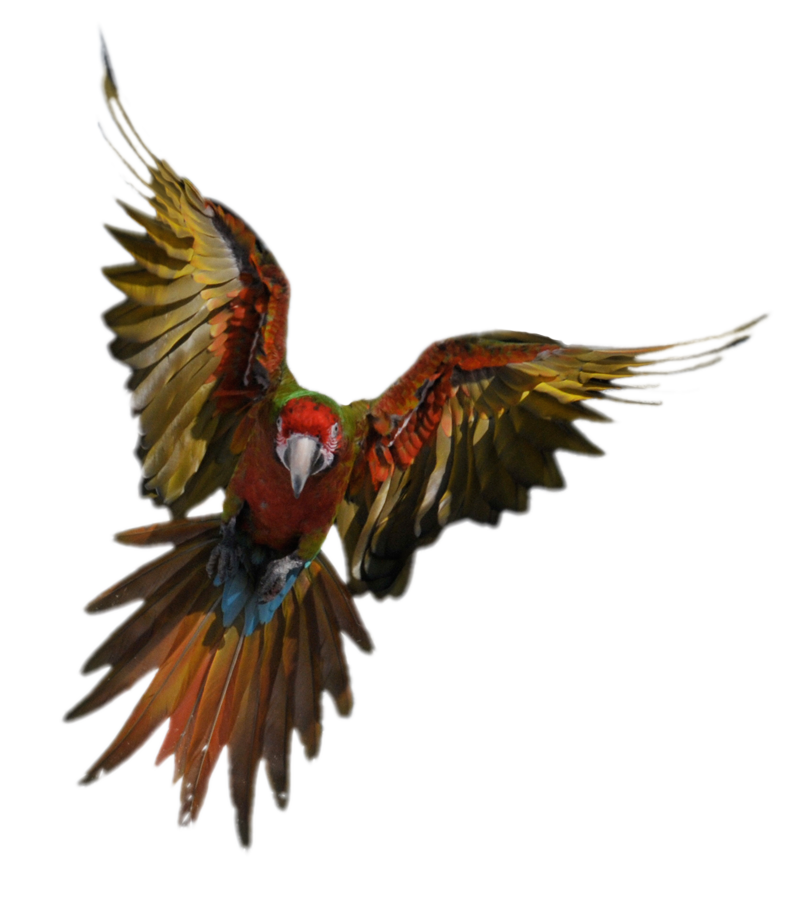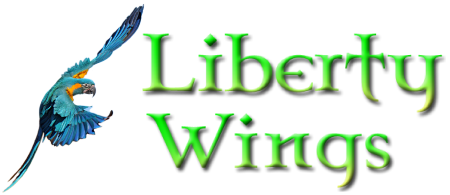
From A Recent Conversation About Flying Parrots
No place we keep parrots is 100% safe. Actually it seems that accidents in the aviary were more dangerous than flying freely. But it was mainly the things we were not expecting that caused us the most problems flying outdoors or in the aviary. The things we did expect were not the problems we expected them to be. These are not nearly the easily answered questions people think they are. In fact, people who have little or no experience flying parrots have all kinds of fears that are not justified. No one can blame them, that is human nature, to make guesses about what might be dangrous. Flying parrots outdoors does have its dangers, but they are not what most peopel think they are. It is the unexpected that usually gets us, just like in the rest of life.
I understand the concern and fears related to flying parrots. I also understand the question people have as to WHY fly parrots at all? I also understand the concern that regular people cannot learn this and that only professionals should do it. But again, I must point you to hard evidence. I have had great success teaching students through my classes where we discussed the theory and science I rely on and then spend time working with them as they work with their young birds. These classes result in their birds skillfully flying complex locations. More than one of our students went a few weeks later and bought another bird and trained it all by themselves. In one case it was a HY that he bought. I have photos of this bird flying level 5 locations, from the top of 1000 ft cliff where there is no recovery possible if the bird does not come back on its own. The point being these skills are easily learnable with the right instruction. Most professional bird trainers do NOT understand how to teach these skills, mainly because they do not fly birds this way or know how.
Once you have experienced a bird this way, it is very hard to go back to keeping it mostly in a cage, even large cage. I built a 30 ft x 100 ft aviary and it was not enough. I still needed to let them fly outdoors. The birds are ALIVE when flying and everything about them is expanded and celebrated in ways I have never experienced before. It is like owning a dirt bike motorcycle and keeping it in the living room, never taking it out to the track. The person that actually rides that motorcycle on the track has an appreciation and understanding of the motorcycle that the person who keeps his in the living room will never understand. And all his fears will remain grounded in theories he lacks experience to validate. But unlike the motorcycle, which could not care one way or the other, our birds LOVE being loose every day, even though they sometimes are chased by hawks. They get to LIVE as birds, instead of living as a hamster. They are designed through natural selection to be incredible atheletes of the sky and if you are around them very long as flyers it shows and is obvious how much they enjoy this aspect of their lives. Once you experience this there is no going back. The level of understanding that comes from being around them as flyers will change how you view parrots and training. The approach I use is simple and easily learned by anyone. Not all parrots though can be trained this way. Instead of working with the birds we have, we select the best possible bird for achieving success and then we structure EVERYTHING to insure success. The process is fun and highly rewarding. And then once the bird is trained, the relationship and activities that you both have available are unequaled.
The reason not all birds can be trained this way is because the way nature trains flight requires many things to be learned during certain stages of development. Once that stage of development is passed, it is much more difficult to learn those things, sometimes even impossible. As has been noted, there are dangers involved with flying parrots outdoors. So for me, I prefer to train only the student that has every advantage and thus the greatest chances of success. Yes I can train older birds but the risks are much higher. And if I am teaching a new trainer, the last thing I want is a difficult bird for them to work with. I want the new trainer to have the easiest bird possible. It is far safer for both of them this way.
In the wild the young parrot would learn to fly through the trees at full speed without poking its eyes out with any of those tiny branches, it would learn to fly with a flock and to communicate with its parents and other birds in the area, it would learn to use local land marks to navigate back to the nest area or to water sites. All this is learned BEFORE weaning. The bird cannot get to the food to learn to feed itself if it cannot do all those things. Think about the mental stimulation going on in that little head during those processes, the neural activity involved. Then think about the mental activity of the baby bird that grows up weaned by most breeders. The breeder is insuring the physical body is healthy but what about the mental development? This is a very very important stage of development and the brain needs that level of stimulation to properly develop. Neurobiology is making this fact more and more clear all the time now. Aviculture is still in the dark ages when it comes to the way parrots are raised. Someday maybe people will realize how important it is for these birds to have their mental needs also tended when raising baby birds.

Article Comments